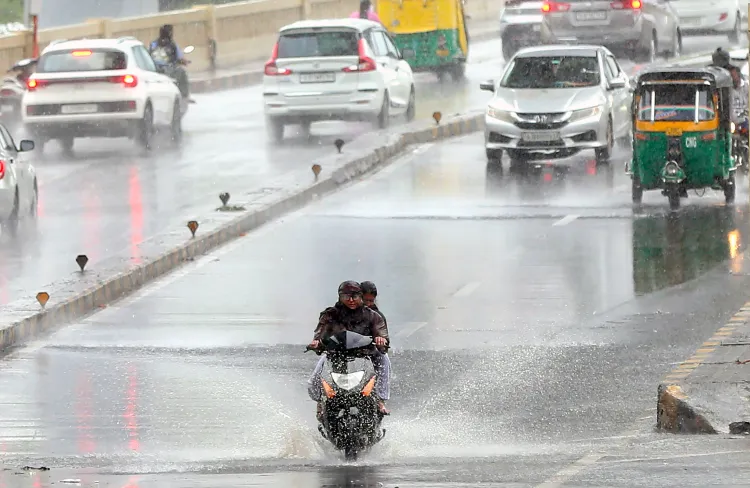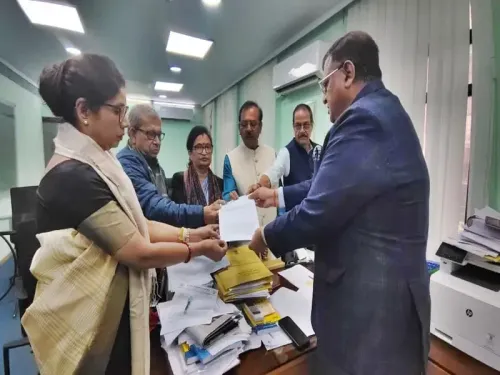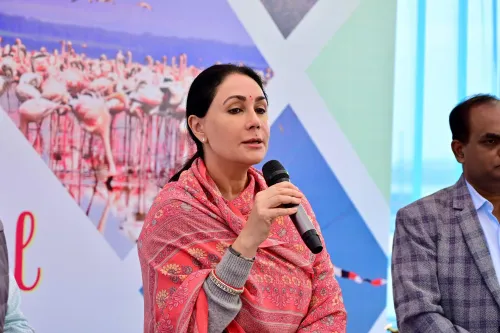What Impact Have Monsoon Showers Had on Gujarat?

Synopsis
Key Takeaways
- Gujarat has experienced widespread monsoon rains.
- All 33 districts and 199 talukas reported rainfall.
- Jamkandorna, Idar, and Dhanera saw over 5 inches of rain.
- Government is on high alert, managing potential flood risks.
- Essential services are being coordinated to minimize disruption.
Ahmedabad, July 4 (NationPress) Over the last 24 hours, Gujarat has experienced significant monsoon rains, with precipitation reported across all 33 districts and 199 talukas, as stated by the State Emergency Operation Centre (SEOC) in Gandhinagar. The most substantial rainfall was noted in Jamkandorna (Rajkot), Idar (Sabarkantha), and Dhanera (Banaskantha), each exceeding 5 inches.
Dhoraji in Rajkot and Jodia in Jamnagar also saw over 4 inches of rain. Various other talukas, such as Mundra and Gandhidham in Kutch, Lalpur in Jamnagar, Jetpur in Rajkot, and Wadhwan and Chuda in Surendranagar, along with Vadgam and Dantiwada in Banaskantha, recorded rainfall of more than 3 inches. In total, 21 talukas experienced over 2 inches of rain, 32 received more than 1 inch, while the remaining 133 talukas saw less than an inch.
As of 6:00 a.m. on Friday, Gujarat has achieved 39 percent of its seasonal average rainfall. Between 6:00 and 10:00 a.m. today, Vav taluka in Banaskantha reported the highest rainfall in the state at 3 inches.
Since the start of the season (June 1 to early July), Gujarat has recorded approximately 266–324 mm of monsoon rainfall, which corresponds to around 37 percent of its long-term seasonal average.
The India Meteorological Department and State Emergency Operation Centre have confirmed this monsoon's performance as 'above-normal,' with total rainfall exceeding a third of the expected amount, indicating strong early-season precipitation. In light of the extensive rainfall throughout Gujarat, the state government has initiated district-level control rooms and advised local administrations to be on high alert, particularly in flood-prone and low-lying regions.
Teams from the State Disaster Response Force (SDRF) and National Disaster Response Force (NDRF) are on standby, while monitoring efforts for drainage and water-logging are in place. The government is also collaborating with agriculture, power, and road departments to ensure minimal disruption to essential services and protect standing crops in severely affected talukas.










